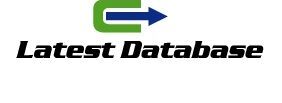In 2025, businesses deal with massive volumes of phone number data—from online sign-ups and event registrations to CRM imports and third-party list acquisitions. While collecting large datasets is easy, validating them at scale is a complex process that directly impacts communication reliability, customer trust, and legal compliance. Validating large batches of phone numbers involves more than just checking if a number is numeric or the right length; it includes verifying the number’s structure, origin, activity status, and permission for use. Poorly validated data can result in messaging failures, carrier blocks, customer complaints, or fines under regulations like GDPR, TCPA, and CAN-SPAM. To mitigate these risks and armenia phone number list maximize your messaging ROI, businesses must implement a systematic, automated process for batch validation using modern tools and best practices.
The first step to validating large batches of phone numbers
is format standardization. This means converting every number into a universal structure—typically the E.164 format (e.g., +14155552671)—to ensure consistency across systems. Use libraries such as Google’s libphonenumber, available in most programming languages, to parse, clean, and reformat entries. These tools can also detect the country, area code, and potential line type (mobile vs. landline). Once formatting is complete, proceed with real-time validation APIs to verify whether numbers are active, reachable, and validating large batches of phone number data assigned to a carrier. Providers like Twilio Lookup, Telesign, NumVerify, and Data8 offer batch-processing capabilities that return metadata such as line type, carrier name, and risk level. You can run this step through an automated script or ETL process, feeding data into your CRM, CDP, or marketing platform. To speed things up, break large datasets into chunks and process them asynchronously—especially useful for validating
lists with hundreds of thousands or even millions of records.
Finally, validation isn’t complete without phone database compliance checks and behavioral insights. For each validated number, ensure you’ve tracked and stored the opt-in status, consent timestamp, source of acquisition, and regional restrictions. Numbers from the EU, Canada, or California (under CCPA) may have different consent requirements. Integrate opt-in tracking into your CRM fields or data warehouse so that marketing and compliance teams have full visibility. In addition, monitor historical engagement behavior—such as delivery rates, bounce history, and opt-out events—to flag high-risk numbers for removal or suppression.
Batch validation should be part of a routine
hygiene process, not a one-time operation.
Automate revalidation every 3–6 months using scheduled jobs or webhooks, and include suppression logic to exclude stale, inactive, or recycled numbers.
For companies with limited engineering resources,
consider using no-code tools like Zapier, Integromat (Make), or Flatfile to streamline validation workflows. In the end, validating large batches of phone number data ensures not just better deliverability, but higher conversion rates, improved user experiences, and stronger compliance postures—making it an indispensable practice for data-driven teams in 2025.






